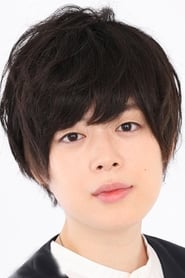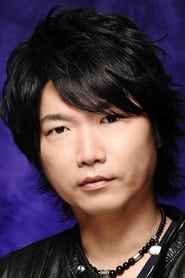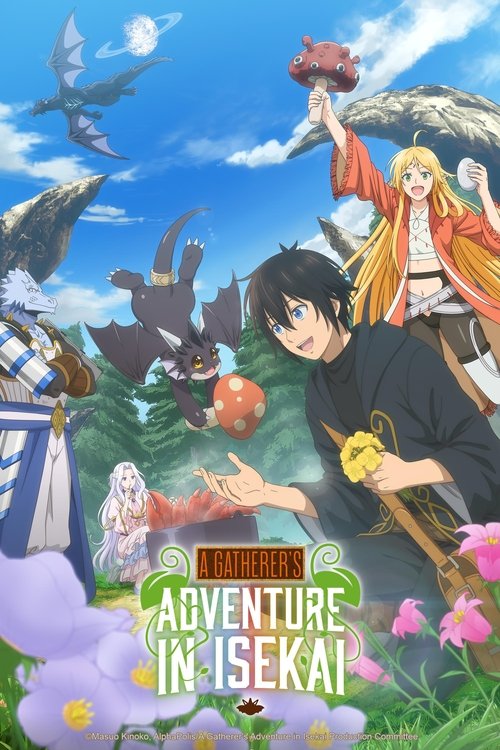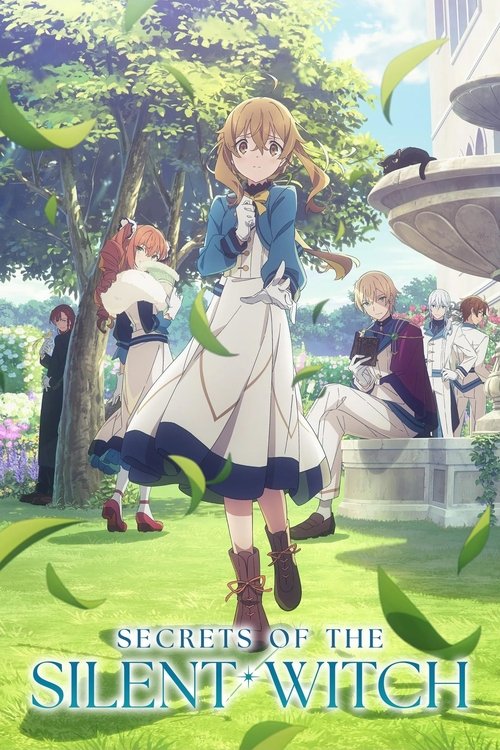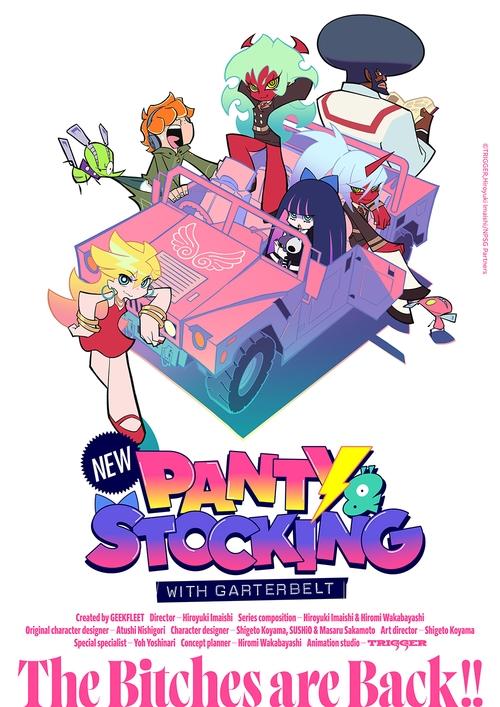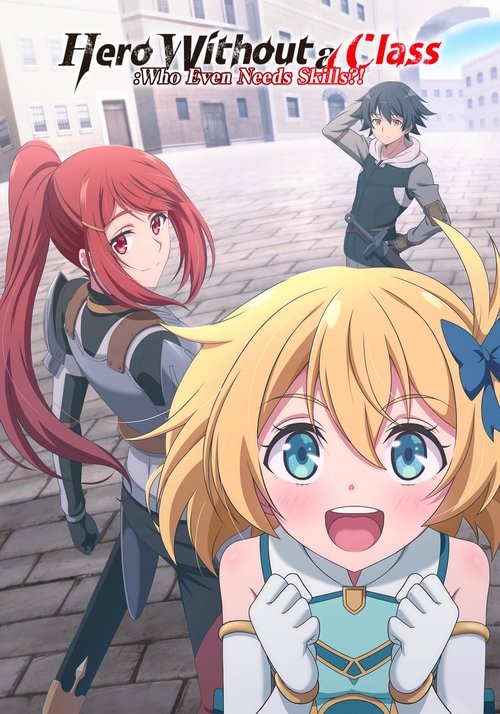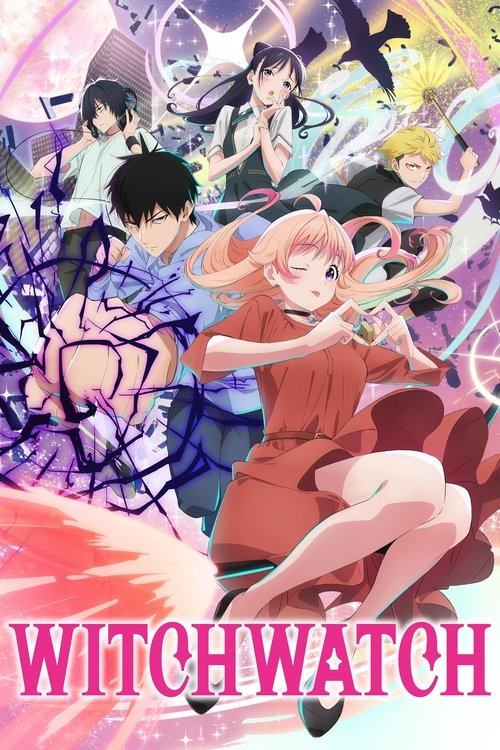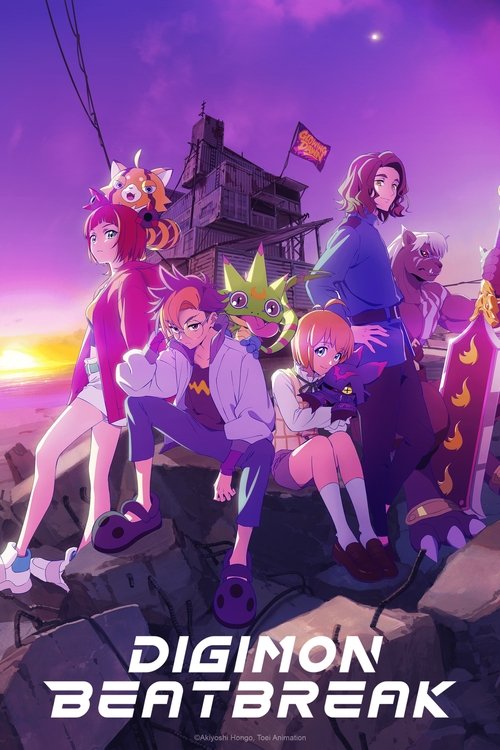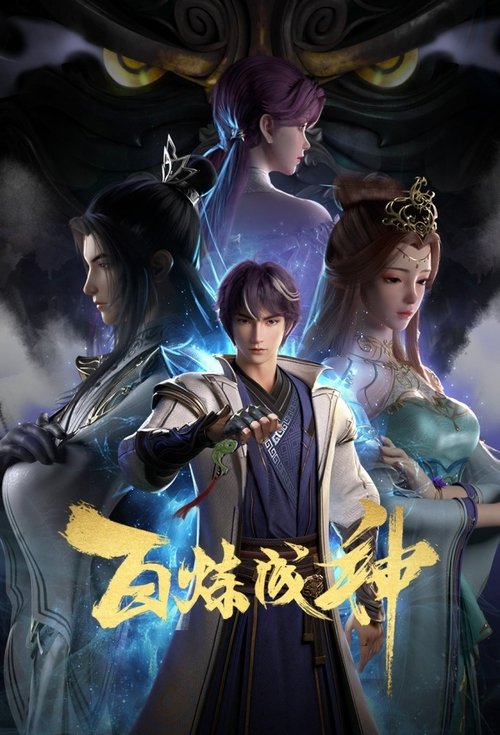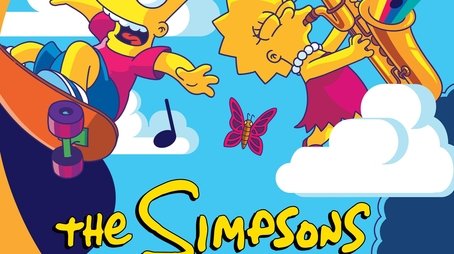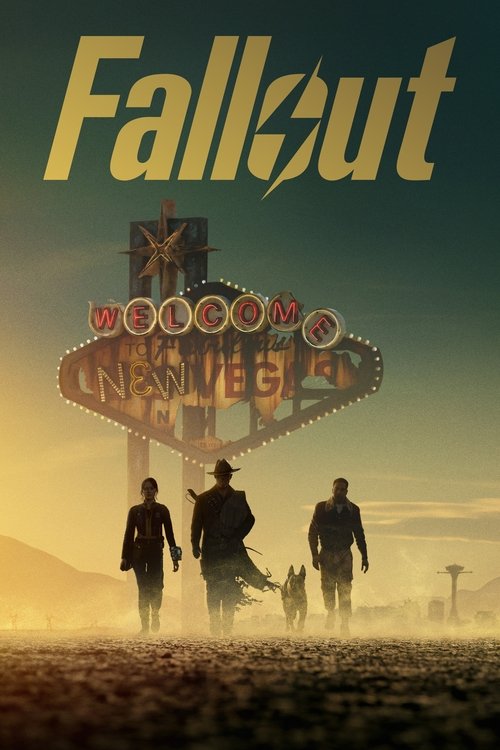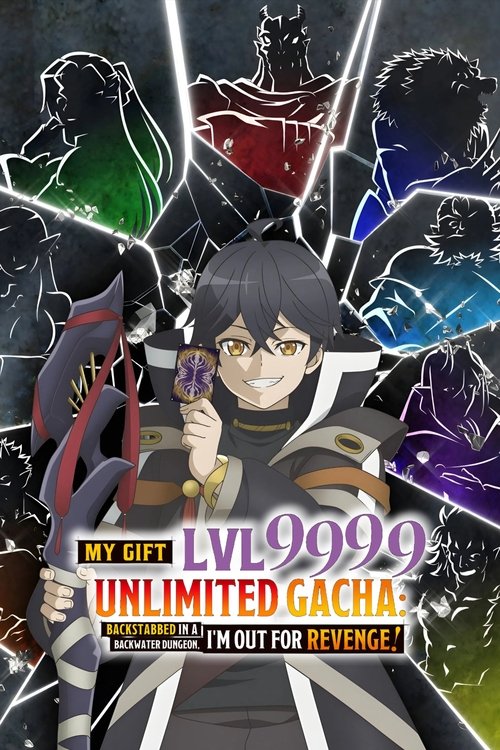
Ask Your Own Question
What is the plot?
Rudo is an orphan living in the slums of the Sphere, a floating city where the wealthy live in luxury and the poor, known as "tribesfolk," are shunned and forced to survive by scavenging through trash. Rudo is raised by Regto, a man who urges him to avoid criminal activities, but Rudo's extraordinary physical abilities make him a valuable "trash raider," collecting discarded items for trade. Despite the harshness of his life, Rudo forms a close bond with Regto, who acts as both a father figure and moral compass.
One day, Rudo is falsely accused of murdering a prominent citizen. With no chance to defend himself, he is convicted and sentenced to exile--thrown off the edge of the Sphere into the Pit, a vast wasteland below where society's garbage accumulates and mutates into monstrous creatures. As he plummets, Rudo is filled with rage and confusion, unable to comprehend why he has been betrayed by the world above.
Rudo survives the fall and awakens on the Ground, surrounded by towering piles of refuse and the ever-present threat of trash monsters. He is discovered by a group called the Cleaners, a ragtag band of fighters, support workers, and artists who battle the monsters and try to maintain some semblance of order in the Pit. The Cleaners are led by Enjin, a charismatic but pragmatic leader who sees potential in Rudo despite his hostility.
Rudo initially refuses to trust the Cleaners, consumed by anger and a desire for revenge against those who cast him out. He is particularly resistant to forming bonds, but his isolation is gradually eroded by the persistence of the group, especially Riyo, a compassionate medic, and Zanka, a fierce warrior with a strong sense of justice. Rudo's immaturity and inexperience with the surface world are highlighted in small moments--he is dazzled by sweets he has never tasted before and embarrassed by Riyo's presence in his room.
The Cleaners explain that some individuals, known as Givers, can awaken the latent power in discarded objects, turning them into "Vital Instruments"--unique weapons or tools that reflect the user's personality and creativity. Rudo's own ability manifests when he dons a pair of gloves, which allow him to repurpose almost any object into a weapon, such as transforming a tire into a spiked flail or a talisman into a shield. This power is deeply tied to his belief that nothing and no one is truly worthless, a philosophy that begins to shape his identity.
Rudo's first major battle occurs when a group of trash monsters attacks the Cleaners' base. He fights alongside Zanka, whose staff is a Vital Instrument that channels his fiery determination. During the fight, Rudo's anger overwhelms him, and he nearly beats a defeated monster to death with his bare fists, shocking his allies and forcing him to confront his own capacity for violence. This moment marks a turning point, as Rudo begins to question whether his rage will define him or if he can channel it into something more constructive.
As Rudo trains with the Cleaners, he learns about the social hierarchy of the Pit and the ongoing conflict with the Raiders, a rival faction that seeks to exploit the chaos for their own gain. He also encounters Amo, a child-like antagonist with a disturbing backstory, whose motivations are rooted in trauma and a twisted sense of justice. Amo's presence forces Rudo to grapple with the idea that his enemies are not simply evil, but products of the same unjust system that condemned him.
A critical decision arises when the Cleaners learn that a powerful Raider, Zodyl Typhon, has stolen Zanka's staff, a violation that strikes at the heart of Zanka's identity. Rudo, now more integrated into the group, volunteers to join the mission to retrieve it. The team infiltrates the Raiders' stronghold, engaging in a series of skirmishes that test their teamwork and individual resolve. Rudo uses his gloves to improvise weapons from the environment, while Riyo provides medical support and Enjin coordinates their efforts.
During the confrontation with Zodyl, Rudo is forced to fight alone when his allies are separated. Zodyl mocks Rudo's origins and his belief in the value of discarded things, but Rudo refuses to back down. In a climactic battle, Rudo repurposes a broken chain into a whip, using it to disarm Zodyl and reclaim Zanka's staff. The victory is bittersweet, as Rudo realizes that his quest for vengeance has begun to shift toward a desire to protect his new friends and challenge the system that created the Pit.
The Cleaners return to their base, but their respite is short-lived. Delmon, another member of the group, is seen creating a small garden for his wife, who has never seen flowers on the Ground. This quiet moment underscores the humanity and hope that persist even in the bleakest circumstances. However, the peace is shattered when the Hell Guard, a militarized force from the Sphere, descends into the Pit, seeking to eliminate both the Cleaners and the Raiders.
A large-scale battle ensues, with the Cleaners and Raiders forming a temporary alliance against the common enemy. Rudo fights at the forefront, his gloves allowing him to adapt to the changing battlefield. The conflict is brutal, with casualties on both sides, but the combined efforts of the surface dwellers force the Hell Guard to retreat. In the aftermath, Rudo is acknowledged as a full member of the Cleaners, his place in the group now secure.
With the immediate threat neutralized, Rudo makes a pivotal decision: he vows to uncover the truth behind his wrongful conviction and to confront the powers that maintain the oppressive divide between the Sphere and the Ground. He shares this goal with his allies, who pledge to support him. The group begins to plan their next move, aware that the path ahead will be dangerous but determined to fight for a world where no one is treated as trash.
The final scenes show Rudo and the Cleaners preparing for their ascent, gathering intelligence and resources for the journey back to the Sphere. Rudo's anger remains, but it is now tempered by purpose and the bonds he has formed. As they set out, the camera lingers on the vast landscape of the Pit--a monument to waste and inequality, but also to the resilience of those who refuse to be discarded.
More TV Shows Like This
Browse All TV Shows →
What is the ending?
The ending of the 2025 anime Gachiakuta concludes with Rudo confronting the corrupt elite who framed him and cast him into the Pit, a hellish realm of mutated garbage beasts. Using his newfound powers and alliances with the rogue Cleaners, Rudo dismantles the oppressive system. The main characters face their fates: Rudo emerges as a symbol of resistance, while the corrupt rulers are overthrown or exposed. The story closes on a note of hard-won hope and the possibility of rebuilding.
The final sequence of Gachiakuta unfolds in a detailed, scene-by-scene narrative:
The climax begins deep within the Pit, a floating city's underworld filled with monstrous garbage beasts. Rudo, who was wrongfully imprisoned there after being framed for murder, has grown stronger by mastering a mysterious power linked to the toxic environment. He stands alongside the rogue Cleaners, a group of outcasts who fight to survive and resist the city's corrupt hierarchy.
In the first scene, Rudo and the Cleaners launch a coordinated assault on the central control hub of the city's elite, who have been discarding not only waste but also people they deem expendable. The animation captures the chaotic clash vividly: mutated beasts roar and clash with mechanized defenses, while Rudo's power manifests as glowing energy that disrupts the toxic environment around him.
Next, the narrative shifts to the corrupt rulers, who are shown in their opulent floating palaces, oblivious to the uprising at first. As alarms blare, their panic grows. The leader, a cold and calculating figure, orders brutal crackdowns, but the Cleaners' guerrilla tactics and Rudo's leadership turn the tide.
The third scene focuses on a tense confrontation between Rudo and the main antagonist. Their battle is intense and personal, with flashbacks revealing the betrayal that led to Rudo's imprisonment. The fight is depicted with detailed choreography, emphasizing Rudo's resolve and the antagonist's desperation.
As the battle concludes, Rudo defeats the antagonist, exposing the corruption to the city's populace. The rulers are either arrested or flee, and the city begins to reckon with its systemic injustices.
In the final scenes, Rudo stands atop the ruins of the Pit, looking out over the city. The Cleaners gather around him, weary but hopeful. The animation softens, showing rays of light breaking through the polluted skies, symbolizing a new beginning.
Regarding the fates of the main characters:
- Rudo survives and becomes a leader and symbol of change, committed to rebuilding a fairer society.
- The rogue Cleaners remain by his side, their bonds strengthened through shared struggle.
- The corrupt elite are either captured or forced into exile, their power dismantled.
- Secondary characters who supported Rudo find new roles in the emerging order or choose to leave the city to seek freedom elsewhere.
This ending emphasizes themes of resilience, justice, and the possibility of redemption even in a dystopian world. The detailed scenes highlight the physical and emotional toll on the characters, underscoring the cost of fighting corruption and the hope for renewal.
Who dies?
Yes, several characters die in the 2025 anime Gachiakuta, with their deaths playing significant roles in the story's emotional and plot development.
Regto is one of the most notable characters who dies. He is Rudo Surebrec's adoptive father and a Sphereite who showed compassion in a harsh world. Regto's death is a pivotal event early in the series and manga, deeply affecting Rudo's motivations and the narrative's direction. He is brutally murdered, but the exact circumstances and the killer's identity remain a central mystery explored throughout the series. His death symbolizes the loss of hope and kindness in the cruel world of Gachiakuta and serves as a catalyst for Rudo's journey.
Other deaths include various characters and entities such as members of the Raiders and Trash Beasts, which are detailed in the manga and hinted at in the anime. For example, characters like Enjin, Riyo Reaper, Jabber Wonger, and Zanka Nijiku are involved in violent confrontations that lead to deaths, as explained in the timeline of killings in the manga after season 1. The video timeline from July 2025 outlines who kills whom, indicating a sequence of deaths from earlier to later chapters, including potential deaths in season 2 and beyond.
The deaths often occur in brutal fights or as consequences of the harsh societal conditions in the Gachiakuta world, where people are treated as "trash." These deaths are not only physical but also symbolic, reflecting the characters' struggles, betrayals, and the dark environment they inhabit.
In summary, the key confirmed death is Regto's, whose murder is central to the story's emotional core and mystery. Other characters die throughout the series, mostly in violent conflicts, but Regto's death is the most detailed and significant in terms of narrative impact.
Is there a post-credit scene?
For the TV show "Gachiakuta" produced in 2025, there is a mention of a post-credits scene in Episode 9. The scene features Rudo rolly-pollying out of a room after bingeing on snacks. This scene is more comedic and light-hearted compared to the rest of the episode, which focuses on explaining Rudo's powers in a typical shonen anime style. However, specific details about the emotional state or motivations of Rudo during this scene are not provided in the available information.
As for other episodes, such as Episode 15, there are no specific mentions of post-credits scenes. Instead, the episode focuses on intense plot developments, including Rudo being captured by the Raiders and offered an unexpected alliance by their leader, Zodyl Typhon. This twist adds a layer of complexity to Rudo's character and the overall storyline, but it does not involve a post-credits scene.
What motivates Rudo's actions after he is thrown from the Sphere into the Pit?
After being thrown from the Sphere into the Pit following a brutal murder, Rudo is motivated by a desire to survive and understand the harsh realities of his world. He finds help in the Pit, which leads him to learn more about himself and the societal structures around him, fueling his determination to navigate and possibly challenge the oppressive class system he was born into.
Who is Regto and what role does he play in Rudo's life?
Regto is Rudo's foster parent and father figure who provides him some emotional support and guidance in the slums of the Sphere. Despite the harsh environment and Rudo's criminal activities, Regto urges him to stop and serves as a rare source of care and stability in Rudo's difficult life.
What are the main social classes and locations within the world of Gachiakuta?
The world of Gachiakuta is divided primarily into the Sphere and the Ground. The Sphere is a floating town with a stark class divide: the wealthy live in luxury above, while the poor, including Rudo, live in the slums below. The Ground is a dangerous area beneath the Sphere. Other notable locations include the Border, various Wards (North, South, East, West), Safe Zones, and headquarters of groups like the Cleaners.
Who are the Cleaners and what is their significance in the story?
The Cleaners are a prominent group within Gachiakuta's world, likely involved in maintaining order or enforcing rules within the harsh societal structure. They are one of several factions, including Raiders and Hell Guard, that influence the power dynamics and conflicts in the story. Their exact role intersects with the main characters and the unfolding plot, especially in relation to Rudo's journey.
What are the key conflicts involving Rudo and the other factions like Raiders and Hell Guard?
Rudo's journey involves navigating conflicts with various factions such as the Raiders and Hell Guard, who represent different threats and power struggles within the world. These conflicts highlight the brutal and dark nature of the series, with Rudo caught between survival, loyalty, and the oppressive social hierarchy. His interactions with these groups deepen the plot and character development.
Is this family friendly?
The TV show Gachiakuta (2025) is not family friendly and is best suited for viewers aged 16 and older due to its mature and disturbing content. It is rated TV-MA for strong violence, mature themes, and disturbing imagery.
Potentially objectionable or upsetting aspects include:
-
Frequent and intense violence, including graphic fights with blood, stabbing, cutting, and shooting. Scenes depict brutal combat against monstrous creatures and humans, including a murder and a live execution early in the series.
-
Disturbing imagery such as grotesque monsters and eerie wasteland settings that may unsettle sensitive viewers.
-
Strong language with frequent profanity during heated confrontations.
-
Mature and sensitive themes involving implied sexual abuse and exploitation. While no explicit sexual content is shown, traumatic situations are conveyed through flashbacks and symbolic imagery, which can be emotionally heavy and distressing.
-
Additional content warnings include child sex trafficking, sexual harassment, and scenes implying non-consensual acts or coercion, which are referenced in the series though not always graphically depicted.
Given these elements, Gachiakuta contains material that may be upsetting or inappropriate for children and sensitive viewers. Parents and guardians should exercise caution and consider these mature themes before allowing younger audiences to watch.



